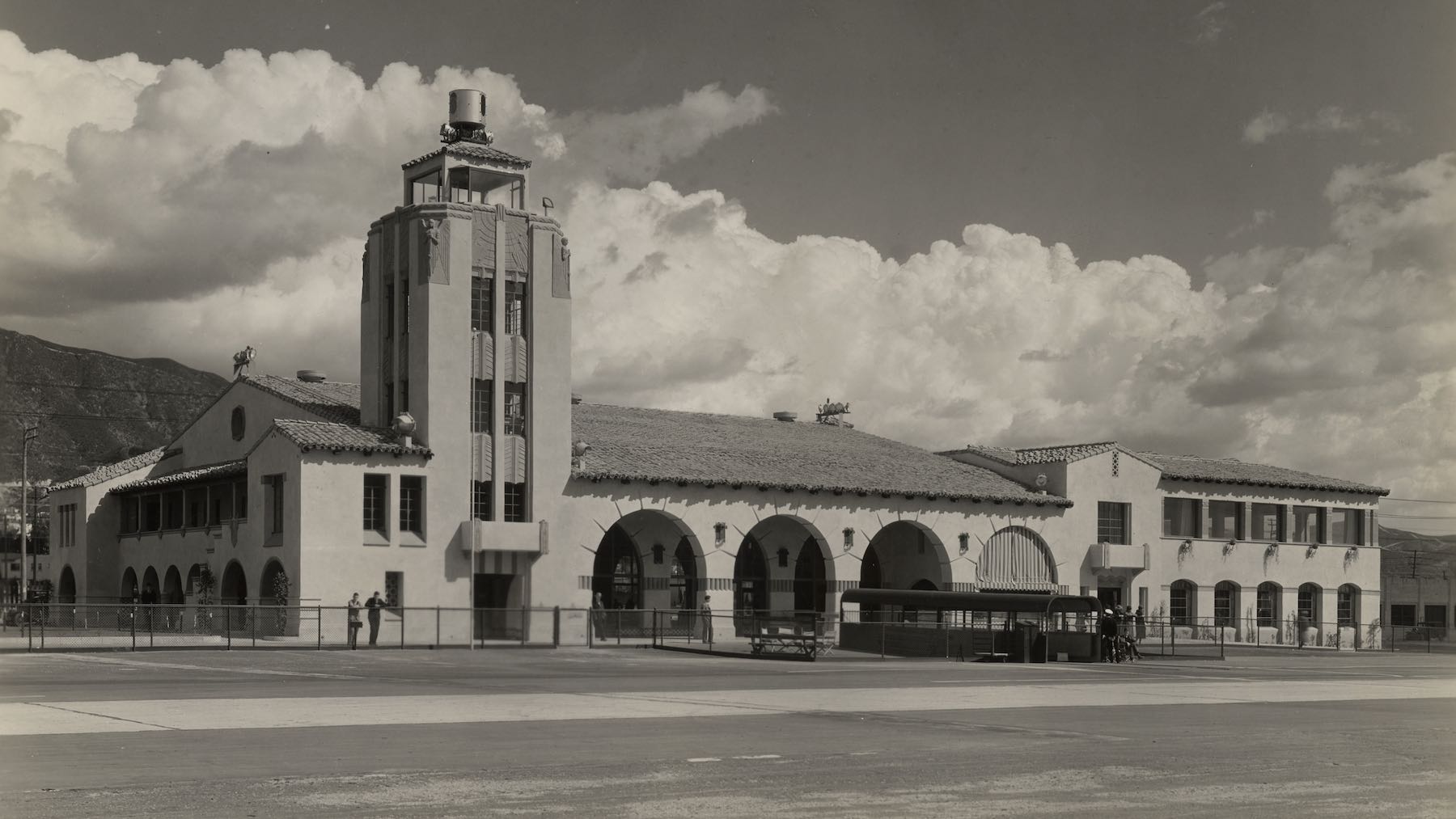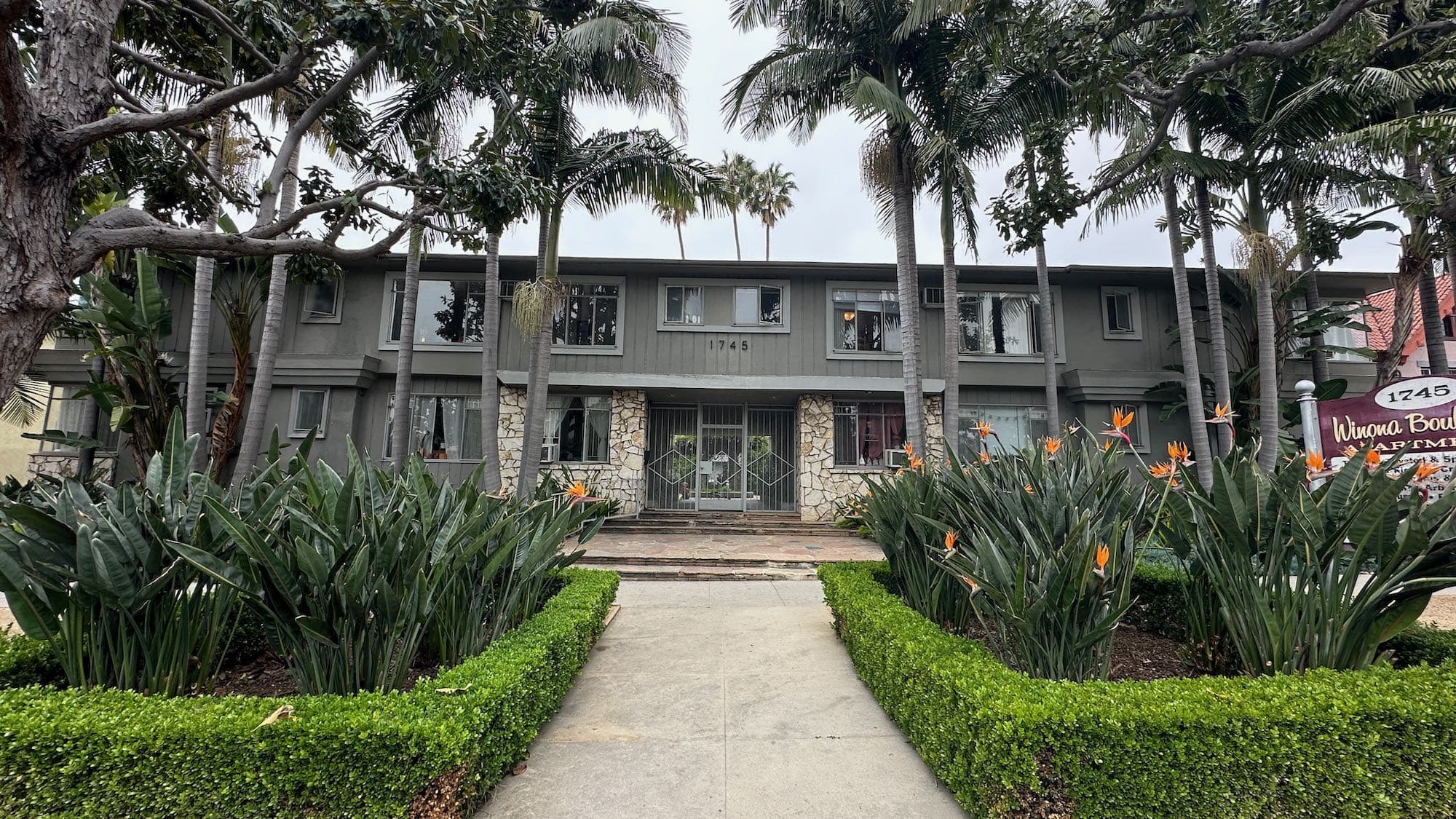Etan R.
Music omnivore, student of LA history, beer snob and amateur father. Working my way through the canon.
Designed by the firm of Allison & Allison, the Washington Irving Branch was one of a wave of libraries built in the 1920s to meet the needs of a growing LA. It's been vacant since the late 1990s, when the branch moved a few blocks westwards.
The E.A.K. Hackett House is an intact example of a "transitional craftsman" home, bridging the Victorian and craftsman eras of LA architecture. It once housed a prominent figure in LA's religious life. AND: there's a mysterious research conundrum about its provenance...
In this quirky 1911 building, Judson Studios crafted the stained glass in most of your favorite old buildings in LA. And they're still at it.
Glendale's Grand Central Air Terminal was the first commercial airport in Los Angeles. While it’s been closed to air traffic since 1959, GCAT’s beautiful terminal building – restored by Disney to its near-original condition – is one of the best-preserved emblems of the birth of commercial aviation in Los Angeles.
These four bungalow courts officially complete my survey of the 30 Pasadena bungalow courts on the National Register of Historic Places. They’re great examples of how architects and developers played around with the bungalow court form, given the constraints of the lots that they were working with.
Built in 1923, this handsome brick and terracotta building witnessed 60 years of ritual and fraternity as the Highland Park Masonic Temple. Since 2017, it's housed the music venue the Lodge Room and an adjoining restaurant, Checker Hall. All the original Masonic symbols are still intact, and EVERYWHERE.
Fire Station No. 30 once housed one of LA's two all-Black units during an era when Black and White firefighters were segregated. After a restoration in the 1990s, the old station building was reopened as the African-American Firefighter Museum, dedicated to preserving and retelling the story of Black firefighters in LA and beyond.
Villa Carlotta is a fine example of architect Myron Hunt's residential work, and one of Altadena's first homes designed for electricity from the get-go. It was built for Francis R. Welles, who oversaw European operations for Alexander Graham Bell's telephone company for over 30 years.
Since 1939, Mariposa Street Bridge has connected the equestrian neighborhoods of Burbank & Glendale with the bridle trails of Griffith Park. It’s a reminder that, even though this is a car town, cowboy culture is still alive in LA.
The bungalow court blossomed in Pasadena between 1910 & 1930. For part four of my tour of all 30 Pasadena courts on the National Register of Historic Places, we're focusing on six that are known only by their addresses. I call them: THE NAMELESS.
Rancho Los Alamitos compresses 150+ years of Los Angeles history into a single site. It went from Tongva village and sacred site, to Spanish land grant, to Yankee cattle and sheep ranch, to the center of a massive agricultural operation, and now a beautifully-preserved educational site, open to the public for free.
Hangar One was the first building constructed for the LA Municipal Airport (now LAX), and the only one still standing from the airport’s earliest days.
Constructed ~1845, the Michael White Adobe is one of just 39 historic adobes left in LA County, and the second oldest building in San Marino. Its first owner was a sailor, shipbuilder and rancher who unwittingly took part in some of the most significant events in 19th century Los Angeles history.
The Winona Boulevard Mid-Century Modern Historic District includes 13 apartment complexes in a grab bag of MCM styles, built from 1950-1964. Collectively they offer a snapshot of a neighborhood in transition during the post-WWII population boom.
The bungalow court flourished between 1910-1930, especially in Pasadena. For this third batch in our exploration of all 30 Pasadena courts on the National Register, we’re looking at six courts clustered around the historic section of South Marengo Avenue.














